#clash detection and coordination services
Explore tagged Tumblr posts
Text
MEPF BIM Services for Prefabrication and Modular Construction

Discover how MEPF BIM services enhance prefabrication and modular construction through improved accuracy, faster project completion, and seamless coordination across building systems for high-performance infrastructure. Streamline your AEC projects with smart BIM integration.
#mep bim services#mepf bim services#mep drafting services#mepf bim modeling#hvac bim services#mechanical drafting services#mep clash detection services#mep coordination#bim consultation#mep 3d modeling#bim mep services
2 notes
·
View notes
Text
Ensure seamless collaboration and error-free construction with BIM Coordination Services. From MEP BIM Coordination to BIM Clash Detection, streamline your projects with accuracy and efficiency.
#BIM Coordination Services#MEP BIM Coordination#Revit BIM Coordination#BIM Clash Detection#BIM Services#Building Information Modeling
0 notes
Text
The Power of MEP Outsourcing in Reducing Rework and Costs
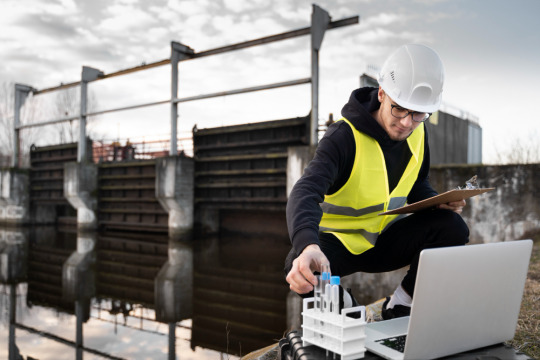
In the construction industry, time and money are two invaluable resources. Any delay or cost overrun can significantly impact a project's success. Mechanical, Electrical, and Plumbing (MEP) systems play a crucial role in the functionality and efficiency of a building. However, their installation and integration can be complex and prone to errors, leading to rework and inflated expenses. To combat these challenges, many construction firms are turning to MEP outsourcing services as a strategic solution.
1. Specialized Expertise
MEP outsourcing brings on board dedicated professionals with specialized knowledge and experience in mechanical, electrical, and plumbing systems. These experts are well-versed in industry standards, regulations, and best practices, minimizing errors and rework stemming from inexperienced or untrained staff.
2. Streamlined Project Timelines
With focused teams dedicated solely to MEP tasks, project timelines are streamlined. This acceleration ensures projects progress efficiently, meeting deadlines and client expectations. Shorter timelines translate directly to cost savings by reducing labor and overhead expenses.
3. Cost-effectiveness
Outsourcing MEP tasks optimizes resource allocation, mitigating unnecessary expenditures. External firms often possess cutting-edge tools and technologies, sparing construction companies from investing in expensive equipment or training programs. Furthermore, firms can scale their workforce as needed, avoiding the burden of maintaining a large in-house team during quiet periods.
4. Mitigated Liability and Risk
BIM Services Provider shifts responsibility for design, installation, and performance to external firms. This reduces legal and financial exposure for construction companies, as outsourcing partners assume accountability for errors or failures. In the event of defects, the burden of litigation and reputational damage is minimized.
5. Quality Assurance
External firms adhere to rigorous quality standards and regulatory requirements, ensuring MEP systems meet industry benchmarks for performance, safety, and sustainability. Stringent quality control measures minimize defects and deficiencies, decreasing the need for rework and warranty claims.

6. Fostering Collaboration and Innovation
Partnering with specialized firms encourages knowledge exchange and collaboration, fostering innovation and creative problem-solving. By tapping into a broader network of expertise, construction companies can drive innovation, optimize designs, and improve project outcomes.
7. Scalability
Point Cloud to Revit Modeling allows construction firms to scale their operations according to project demands. This flexibility enables firms to maintain agility in a dynamic market environment, adjusting resource allocation and workforce size as needed to meet project requirements.
8. Risk Management
Outsourcing partners assume responsibility for managing risks associated with MEP systems, including design errors, material procurement, and installation challenges. This reduces the burden on construction companies and allows them to focus on core competencies while minimizing exposure to potential liabilities.
9. Enhanced Focus on Core Competencies
By outsourcing MEP tasks, construction firms can redirect internal resources and focus on their core competencies, such as project management, client relations, and overall project delivery. This allows for greater efficiency and effectiveness in delivering high-quality construction projects.
10. Competitive Advantage
Embracing MEP outsourcing gives construction firms a competitive edge in the market. By leveraging specialized expertise, streamlining processes, and optimizing resource allocation, firms can deliver projects more efficiently, cost-effectively, and profitably than their competitors.
In conclusion, MEP Outsourcing Companies in India offers construction firms a powerful strategy for reducing rework and costs while enhancing project efficiency and quality. By harnessing specialized expertise, streamlining processes, and mitigating risks, outsourcing partners enable construction companies to deliver successful projects on time and within budget, ultimately driving competitiveness and profitability in the industry.
#mep coordination services#mep bim coordination services#clash detection and bim coordination services#mep clash detection services#clash detection services#bim coordination services#3d modeling services#scan to bim services
0 notes
Text
Affordable Building Information Modeling (BIM) Services in Oxford, UK

Silicon EC UK Limited is the most trusted and fastest-growing engineering company in the UK which provides Building Information Modeling Services to our clients. It specializes in providing high-quality BIM Drafting Services, BIM Drawing Services, and 3D BIM Modelling structures with the help of BIM Software.
Visit our website :
#bim services#bim consultant#bim design#bim drafting#3d bim modeling services#structural bim services#bim revit#Building Information Modeling Services#Revit BIM Modeling Services#BIM Services#BIM Shop Drawing Services#BIM Clash Detection Services#LOD BIM Service#Revit BIM Family Creation Services#Structural BIM Services#BIM Coordination Services#Point Cloud to BIM Services#BIM 3DModeling Services#Building Information Modeling#Revit BIM Services#BIM Design Services#BIM Consulting Services#bim service providers#BIM Services London#bim service provider#BIM service providers in London#BIM drafting London#bim modelling services#bim services provider#BIM service provider London
0 notes
Text
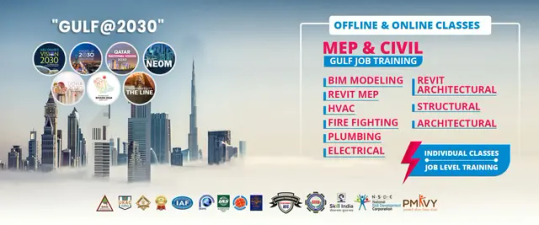
#education#training#mep services#mep design#mep bim coordination#mep shop drawings#mep clash detection#gas and oil
1 note
·
View note
Text

#bim coordination services#bim modeling services#bimtechnology#clash detection#mep services#architecture#3d model#Clash Detection services
1 note
·
View note
Text
Why Is Clash Detection So Important In BIM?
The goal of Building Information Modeling (BIM) is to achieve collaboration and coordination in the implementation of design and various other elements of any construction project. Whenever designs from different disciplines are joined together on a common platform, many hard and soft clashes and workflow clashes occur.
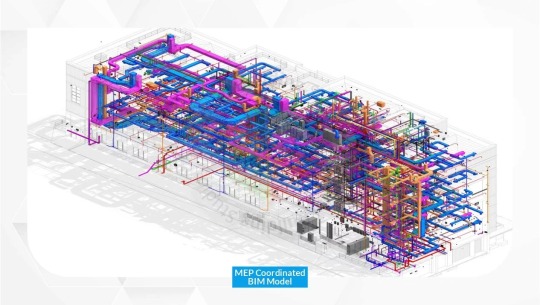
BIM efficiently helps contractors and construction engineers in detecting these clashes, by considering the constructability or operations of the building.
What is Clash Detection
Clash Detection is a part of the Building Information Modeling (BIM) process wherein experts like contractors, sub-contractors, architects, project workers, sub-workers, and so on, can distinguish the conflicts in the construction cycle early on, and resolve them when still within the structural design discipline.
For this, a 3D BIM Model proves to be of great help settling conflicts in no time through a computerized approach so that there could be potential time, money, manpower, and resource-saving during that actual construction.
How to go for detecting and resolving clashes?
A clash occurs when variables of different models occupy the common space. Clashes may be geometric, like pipes passing through walls. Schedule-based clashes occur when various sequential aspects of work are scheduled to occur simultaneously or in reverse order, or clashes may occur when changes and updates are not made to the drawings.
To sum up, when the parts of various building modules cross one another to occupy the same space, clashes do take place. If it is tracked down that extra space shared around the gear and the contention occurred between the work process and equipment planning, there are high odds of detecting clashes.
To understand this, let us take an example that would explain how BIM can help in identifying clashes and avoid a scenario like that.
Pipework might have clashes with multiple beams portraying that many numbers of clashes in the model. Simply, by changing the positioning of pipework, one can resolve the clashes to have everything praised and in place. It best to detect such clashes within the planning phase of the BIM cycle, allowing one to inspect and resolve.
Read More : Learning About Clash Detection and Related Services
Why clash detection is so important?
Clash detection aids in effectively identifying, inspecting, and reporting interference in a construction project model. It is useful in checking work status and wanes down human errors during model inspections. Clash detection is important in BIM because it integrates several models (structural, MEP, etc.) into a single BIM model.
With the clash detection feature, faults that conventionally were detected on the site and involved high cost and schedule implications, if corrected at that stage, can now be seen by BIM service providers in the office even before visiting the site. With BIM, clash detection is made possible for even objects within objects (like a steel rod immersed inside a concrete wall). Learn all about BIM and Clash Detection to understand its true digital applicability.
Original source : BIM Clash Detection Services
0 notes
Text
BIM Modeling Services in USA - BIMPRO LLC

BIMPRO LLC is a BIM Company in Texas offering Revit Drafting, BIM Architectural, Structural, MEP, Clash Detection, coordination, CAD to BIM and Revit Family Creation Services in USA.
#BIMCompanyinTexas#BIMCompanyinUSA#2DDraftingServicesCalifornia#3DModelingServicesColorado#BIMServicesDallas
2 notes
·
View notes
Text
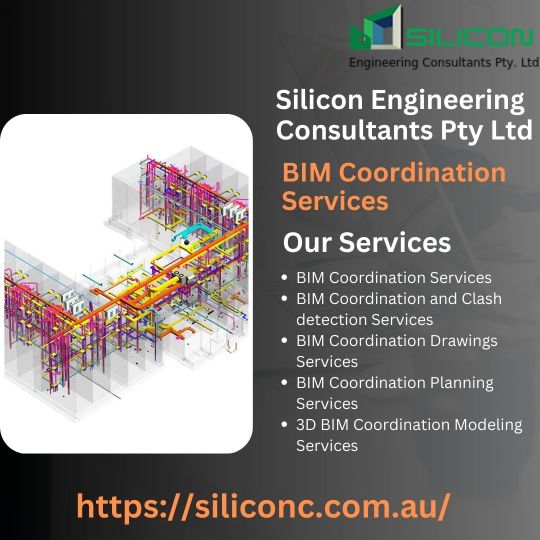
🌍✨ Looking for top-tier BIM Coordination services? Silicon Engineering Consultants Pty Ltd delivers expert solutions across Australia and globally! 🚀 Our team ensures seamless project management with precision and innovation. 🏗️💡
Visit us at:
https://siliconc.com.au/bim-services/bim-coordination-clash-detection/
#BIMCoordinationService#BIMCoordinationandClashdetectionService#BIMCoordinationDrawingsService#BIMCoordinationPlanningService#3DBIMCoordinationModelingService#bimservices#cadservices
2 notes
·
View notes
Text
Improving MEP Coordination with Revit BIM Modeling

MEP coordination is a significant role player in AEC projects, allowing MEP engineers and contractors. With Revit modeling, professionals can easily identify and leverage the software for efficient and accurate outcomes. Read more in detail how MEP coordination is improved with revit BIM modeling.
#mep coordination#mep bim coordination#mep bim services#mep 3d modeling#bim coordination services#mep coordination drawings#3d bim modeling services#bim mep coordination#mep clash detection
2 notes
·
View notes
Text
Streamline Your Projects with Expert BIM Coordination Services

Construction projects can get complicated fast. Different teams work on different parts, and if they’re not in sync, mistakes happen. That’s where BIM Coordination Services come in. They help architects, engineers, and contractors work together smoothly, reducing errors and keeping things on track.
What Are BIM Coordination Services?
Simply put, BIM Coordination Services make sure all the parts of a building project fit together. These services help teams detect design clashes early, improve efficiency, and keep construction moving without unexpected problems. By integrating various BIM Services, teams can visualize the project in 3D, identify potential issues, and resolve them before they become costly on-site problems.
Key Parts of BIM Coordination
MEP BIM Coordination: Ensures mechanical, electrical, and plumbing systems don’t interfere with each other. Proper integration helps avoid installation issues that can delay the project.
Revit BIM Coordination: Uses Revit software to create detailed 3D models for better design accuracy. These models allow teams to analyze structures before actual construction begins.
BIM Clash Detection: Finds and fixes design conflicts before construction starts. This process helps avoid costly on-site changes.
Project Collaboration: Keeps communication clear so everyone stays on the same page. When architects, engineers, and contractors coordinate well, projects move forward smoothly.
Cost Estimation: Helps with budgeting by giving accurate material and labor estimates. Having a precise forecast helps teams manage finances better and avoid unexpected costs.
Why BIM Coordination Matters
1. Fewer Design Mistakes
Using Revit BIM Coordination, teams can see a 3D model of the project, making it easier to catch errors before construction starts. This prevents delays and costly changes during the building phase.
2. No More Last-Minute Fixes
Revit Clash Detection helps spot issues in the design phase so they don’t turn into costly surprises later. For example, detecting a clash between electrical wiring and plumbing early can prevent major rework.
3. Faster, More Efficient Work
With BIM Services, teams can plan better, avoid delays, and save money. Improved coordination reduces downtime, keeping the project on schedule.
4. Better Teamwork
MEP BIM Coordination helps different teams work together, leading to fewer misunderstandings and better results. When all departments collaborate effectively, projects are completed with higher precision.
5. Stay on Budget
By predicting costs accurately, BIM Coordination Services help prevent unexpected expenses. A clear financial roadmap ensures that resources are used efficiently.
6. Follow the Rules
Using BIM Services ensures your project meets all legal and safety standards, reducing compliance risks. Following industry regulations helps avoid legal complications later.
How BIM Coordination Supports Your Project
Early Clash Detection: With BIM Clash Detection, design conflicts can be resolved before construction begins, preventing unnecessary delays.
Better Visualization: Revit BIM Coordination provides a clear picture of the final project, allowing teams to make informed decisions.
Streamlined Workflow: MEP BIM Coordination ensures that mechanical and electrical layouts are properly aligned, preventing rework during installation.
Real-Time Collaboration: BIM Services enhance communication, ensuring that all project stakeholders are updated on changes instantly.
Budget Control: Cost Estimation features help teams stay within budget and allocate resources more effectively.
Regulatory Compliance: By adhering to local building codes, projects avoid compliance issues that could cause legal trouble down the road.
Why Choose SmartCADD for BIM Coordination?
Working with professionals makes a huge difference. SmartCADD provides tailored BIM Coordination Services to make sure your project runs smoothly, with fewer errors and delays. Our experienced team leverages the latest tools to deliver seamless project execution.
Success Stories: How SmartCADD Made a Difference
Case Study 1: High-Rise Commercial Project
A commercial building faced significant coordination challenges due to complex mechanical and electrical systems. By implementing MEP BIM Coordination, our team identified over 200 clashes before construction started, preventing costly adjustments later.
Case Study 2: Residential Development
For a multi-unit residential project, our Revit BIM Coordination approach optimized space utilization. The result? A 15% reduction in material waste and improved design accuracy.
Case Study 3: Industrial Expansion
An industrial plant required detailed BIM Clash Detection to integrate new systems with existing structures. Our team resolved all potential conflicts, ensuring a smooth expansion process.
Ready to Get Started?
Need BIM Coordination Services for your project? Contact us today and let’s make your construction process easier and more efficient!
#BIM Coordination Services#MEP BIM Coordination#Revit BIM Coordination#BIM Clash Detection#BIM Services#Building Information Modeling
0 notes
Text
Leveraging the Benefits of MEP BIM Coordination Services for Sustainable Construction
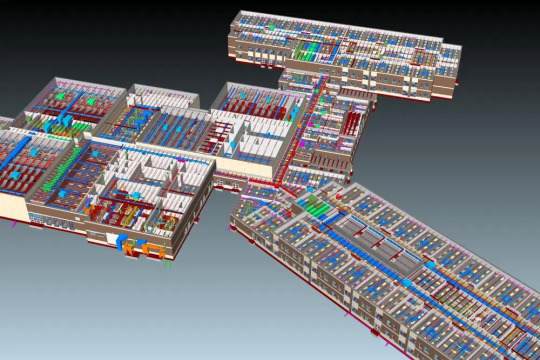
MEP systems, the intricate network of vital building components including heating, ventilation, air conditioning, lighting, plumbing, and electrical systems, serve as the lifeline of any structure, ensuring its functionality and performance. This amalgamation demands meticulous coordination to harmonize its functionality and performance. Traditionally, MEP BIM coordination process has been a labor intensive and error prone process, fraught with the peril of errors, clashes, and consequential delays during construction phases. However, the advent of Building Information Modeling (BIM) technology has heralded a transformative era in this domain.
1. Enhanced Collaboration
MEP BIM coordination services emerge as the conduit for seamless collaboration, forging a unified platform wherein architects, engineers, and contractors, exchanging insights and data fluently. This symbiosis fosters a harmonized vision across stakeholders, mitigating errors, curbing rework, and fostering sustainable construction practices.
2. Early Clash Detection
The embracement of 3D Modeling Services technology orchestrates a virtual realm where MEP systems are meticulously modeled and woven into the architectural design. This allows precursory clash detection, unveiling potential conflicts amid diverse MEP components are discovered and sorted in the nascent stages of design. This pre-emptive strike against clashes yields a dual boon - truncating construction delays and slashing the costly on-site rectifications, fostering sustainability via efficient resource allocation.
3. Optimized Energy Efficiency
MEP BIM coordination services unfurl designers to weave simulations of MEP system performances within a digital realm. By analyzing factors of thermal dynamics, airflow metrics, and lighting, designers craft an energy-optimized tapestry, and implement sustainable design strategies by Integrating renewable energy reservoirs and imbuing HVAC systems with eco-sensitivity resulting in the reduction of carbon footprint and operational costs.
4. Improved Indoor Environmental Quality (IEQ)
Sustainability construction transcends energy efficiency; it encompasses the sanctum of indoor environmental quality (IEQ). MEP BIM coordination services provide the conduit for designers to orchestrate HVAC systems, providing thermal comfort and indoor air quality for occupants. Delving into airflow patterns and temperature modulation, designers curate habitats conducive to occupants' well-being and productivity.

5. Cost Savings
The streamlined orchestration of MEP systems through BIM technology precipitates tangible cost savings across the construction process. Early clash identification begets clashes and conflicts, contractors can circumvent the costly rework and on-site alterations. Additionally, resource optimization and streamlined construction sequencing leads to truncated project timelines and labor expenses, fortifying the project's sustainability credentials.
6. Risk Mitigation
MEP Clash Detection Services stand sentinel against project vulnerabilities by providing a comprehensive overview of the building's MEP systems before construction’s inception. This proactive vigilance engenders pre-emptive issues, defusing spatial conundrums and design dissonances before they escalate into costly problems on-site. By assuaging the risks associated with construction delays and errors, projects unfurl more seamlessly and sustainably.
7. Long-Term Sustainability
Embracing MEP BIM coordination services not only benefits the current project but also accords to long-term sustainability. By honing energy efficiency, elevating IEQ standards, and paring operational overheads, buildings constructed using MEP BIM coordination services are better equipped to meet the demands of a rapidly changing world. They emerge as bastions of resilience, cost-efficiency, and environmentally friendly, inscribing a sustainable legacy for posterity.
In summation, the imperative of harnessing Scan to BIM Services is essential for achieving sustainable construction practices. By fostering collaboration, detecting clashes early, optimizing energy dynamics, enhancing IEQ, and ushering cost savings, these services emerge as vanguards in the crusade for sustainability. Embracing these services not only augments individual projects but also catalyzes the broader goal of creating a greener and more sustainable built environment.
#mep coordination services#mep bim coordination services#clash detection and bim coordination services#mep clash detection services#clash detection services#bim coordination services#3d modeling services#scan to bim services
0 notes
Text
What is BIM Architectural outsourcing & Drafting Services?
BIM Architectural Services refer to the practice of subcontracting architectural design and drafting tasks to external firms or professionals specializing in Building Information Modeling (BIM). In this arrangement, architectural firms or companies outsource certain aspects of their projects, such as creating detailed drawings, 3D modeling, or BIM coordination, to specialized service providers.
Outsourcing BIM architectural drafting services offers several benefits to architectural firms:
Cost Efficiency: Outsourcing allows firms to access skilled professionals at a lower cost compared to hiring in-house staff. This can result in significant cost savings, especially for projects with fluctuating workloads or specialized requirements.
Expertise and Specialization: BIM outsourcing firms often have a team of experienced professionals with expertise in architectural drafting and BIM technologies. By leveraging their specialized skills, architectural firms can ensure high-quality deliverables and efficient project execution.
Focus on Core Competencies: Outsourcing non-core tasks such as drafting allows architectural firms to focus on their core competencies, such as design creativity, client relationships, and project management. This can lead to improved productivity and better utilization of resources.
Scalability and Flexibility: Outsourcing provides architectural firms with the flexibility to scale their workforce up or down based on project requirements. This agility enables firms to handle peak workloads, meet tight deadlines, and adapt to changing market demands more effectively.
Access to Advanced Technologies: BIM outsourcing firms often invest in the latest BIM software and technologies to deliver innovative solutions to their clients. By partnering with these firms, architectural companies can leverage cutting-edge tools and workflows without investing in expensive software licenses or training.
Overall, BIM architectural outsourcing and drafting services enable architectural firms to enhance their competitiveness, improve project efficiency, and deliver high-quality designs to their clients. By partnering with experienced outsourcing providers, architectural firms can streamline their workflows, reduce overhead costs, and focus on delivering exceptional architectural solutions.
United-BIM Inc. is a certified SBE/MBE BIM Modeling Services Company based in East Hartford, Connecticut. Our services include BIM Architectural Services, Architectural Drafting Services, 3D Rendering Services Structural Modeling and Detailing (Rebar, Precast, others), MEP-FP Modeling and Detailing, BIM Coordination & Clash Detection Services, Revit Family Creation Services, Underground Utility Locating Services, On-site & off-site Coordination Services, Onsite & virtual meetings participation, Point Cloud Scan to BIM, CAD to BIM Services, BIM for Facility Management, Accurate Shop Drawings Creation, As-built Drawings Services, Electrical Design Services & more.
1 note
·
View note
Text
Best Building Information Modeling Services in Birmingham, UK at a low cost

Silicon EC UK Limited offers comprehensive Building Information Modeling Services in Birmingham, UK, catering to the evolving needs of the AEC industry. As an engineering leading provider of BIM Engineering Services, we specialize in leveraging advanced technology and expertise to streamline the design, construction, and management processes of building projects.
Our collaborative approach fosters transparency and accountability, fostering trust and satisfaction among our clients. Contact us today to learn more about how we can support your next Building Engineering Project.
For More Details Visit our Website:
#bim services#bim consultant#bim design#bim drafting#3D BIM Modeling Services#structural bim services#bim revit#BIM Services#BIM Shop Drawing Services#BIM Clash Detection Services#LOD BIM Service#Revit BIM Family Creation Services#Structural BIM Services#BIM Coordination Services#Point Cloud to BIM Services#BIM 3DModeling Services#Building Information Modeling#Revit BIM Services#BIM Design Services#BIM Consulting Services#bim service providers#BIM Services London#bim service provider#BIM service providers in London#BIM drafting London#Engineering#Engineering Services#CAD Design#CAD Drafting#CAD Drawing
0 notes
Text
Scan to BIM Services in USA | Point Cloud to Revit by Rvtcad
Rvtcad provides reliable Scan to CAD and Scan to BIM services, successfully delivering over 300 projects annually. We accurately convert Point Cloud data into detailed 3D BIM models and 2D CAD drawings, including high-detail Revit MEP models up to LOD 500. Our experienced team specializes in creating precise as-built documentation, supporting renovation and refurbishment projects worldwide. We work with surveyors, architects, engineers, contractors, and BIM consultants using advanced scanners like Faro, Leica, Matterport, NavVis, Trimble, and GeoSLAM. Our Scan to BIM services are trusted across the USA, UK, Europe, Australia, and over 30 countries globally.
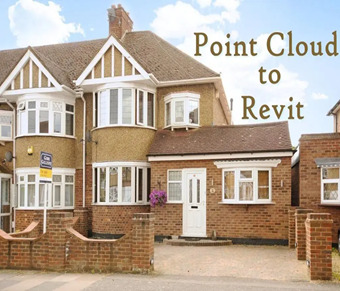
What is Scan to BIM?
Scan to BIM (Building Information Modeling) is the process of capturing existing buildings, structures, or sites through advanced 3D laser scanning technology and converting that data into a highly detailed, intelligent 3D model using software like Autodesk Revit.
The laser scanner collects millions of precise data points — known as a Point Cloud — which forms the foundation for developing an as-built, clash-free, and editable BIM model.
Simply put: Scan to BIM turns real-world spaces into digital models, helping you plan, renovate, manage, and build — smarter.
Why Scan to BIM is a Game-Changer for USA Projects
Across the United States, the demand for precision, speed, and digital workflows is rising in the construction sector. Scan to BIM offers unmatched advantages:
✅ Highly Accurate As-Built Models — Capture exact site conditions to millimeter precision. ✅ Reduced Project Risk — Minimize errors, rework, and costly delays with reliable data. ✅ Streamlined Renovations & Retrofits — Ideal for modifying or upgrading existing structures. ✅ Improved Design Coordination — Centralized models enhance collaboration across teams. ✅ Efficient Facility Management — Maintain and manage buildings using intelligent digital twins. ✅ Faster, Smarter Decision-Making — Empower your team with accurate, real-world insights.
Point Cloud to Revit — What We Deliver
At Rvtcad, we convert Point Cloud data into detailed, intelligent Revit models that meet the highest industry standards. Our models are created to your exact specifications, ensuring:
✔ Architectural Modeling ✔ Structural Modeling ✔ MEP (Mechanical, Electrical, Plumbing) Modeling ✔ LOD (Level of Detail) options: LOD 100 to LOD 400+ ✔ Clash Detection Ready Models ✔ As-Built Documentation
Our Comprehensive Scan to BIM Services (USA)
We offer a full suite of Scan to BIM and Point Cloud to Revit services tailored for the US market:
3D Laser Scanning
On-site laser scanning by expert teams using cutting-edge equipment.
High-density Point Cloud data collection for buildings, infrastructure, and complex sites.
Point Cloud to Revit Conversion
Accurate Revit models for architecture, structure, and MEP systems.
Models developed to client-specific LOD and project standards.
As-Built BIM Modeling
Reliable as-built documentation for renovations, restoration, and facility management.
Scan to 2D Drawings
Generation of precise floor plans, sections, and elevations from Point Cloud data.
MEP BIM Modeling
Comprehensive MEP models for accurate coordination and clash detection.
Industries We Serve Across the USA
Our BIM expertise supports a wide range of projects, delivering accurate Scan to BIM, CAD, and MEP modeling solutions for:
🏢 Commercial Buildings 🏠 Residential Developments 🏗 Infrastructure, Highways & Bridge Projects 🏛 Historic Preservation & Heritage Buildings ⛪ Church & Religious Structures 🏭 Industrial & Manufacturing Facilities 🏥 Healthcare & Hospital Projects ✈ Airports & Transportation Hubs 🏫 Education & Institutional Buildings 🔧 MEP Systems, Coordination & As-Built Modeling
Why Rvtcad is a Trusted Scan to BIM Partner in the USA
✔ Deep USA Market Knowledge — We deliver models that align with American building codes and standards. ✔ Experienced BIM Specialists — Our team combines technical precision with project expertise. ✔ Tailored Solutions — Every project receives a customized approach based on your needs. ✔ Rapid Turnaround Times — Fast, efficient service without compromising quality. ✔ Competitive, Transparent Pricing — High-quality BIM services that respect your budget. ✔ Strict Data Confidentiality — Your project data is protected with top-level security protocols.
Our Process — Seamless, Efficient, Reliable follow a proven, client-friendly workflow to ensure project success:
Step 1: Site Survey & Laser Scanning experts conduct precise 3D laser scans of your building or site.
Step 2: Point Cloud Generation Raw scanned data is processed into a usable, high-density Point Cloud format.
Step 3: Revit Model Development BIM team transforms the Point Cloud into a highly accurate, clash-free Revit model.
Step 4: Quality Control & The final model undergoes rigorous quality checks before secure delivery.
Applications of Scan to BIM in the USA. Our Scan to BIM solutions support:
✔ Renovation & Retrofitting ✔ New Construction Planning ✔ Historic Building Preservation ✔ Clash Detection & Coordination ✔ Facility & Asset Management ✔ Space Optimization & Interior Design ✔ Infrastructure Upgrades ✔ Construction Documentation
Partner with Rvtcad — Your Scan to BIM Experts. You need reliable, accurate, and efficient scan-to-BIM or Point cloud-to-Revit services in the USA Rvtcad is your go-to partner. With our technical expertise, USA project experience, and commitment to excellence, we help you deliver projects on time, on budget, and without surprises.
#scan to bim#point cloud to bim#3d laser scanning#scan to revit#bim laser scanning#point cloud to cad#as-built drawing#bim services#as-built drawings#scan to cad
0 notes
Text
Revolutionizing Construction: The Power of 360 Field Documentation in Precision, Efficiency, and Collaboration
In the dynamic realm of construction, precision, accuracy, and effective communication are paramount. With the advent of cutting-edge technology, the construction industry has witnessed a revolutionary transformation in the way projects are documented and managed. One such groundbreaking innovation is 360-degree field documentation.

Definition of 360 Field Documentation in Construction
360 field documentation in construction refers to the comprehensive process of capturing visual and spatial data from all directions, creating a complete immersive view of a construction site or building interior. This is achieved through the use of specialized 360-degree cameras equipped with sensors capable of capturing images and depth information simultaneously. The result is a high-resolution, panoramic image that provides a complete visual record of the site.
Importance of Accurate Documentation in Construction Projects
Accurate documentation lies at the heart of successful construction projects. It serves as the foundation upon which decisions are made, progress is tracked, and issues are resolved. Traditionally, construction documentation involved extensive manual measurements, photographs, and written notes, which were not only time-consuming but also prone to errors. Inaccurate or incomplete documentation could lead to costly mistakes, delays, and disputes between stakeholders.
Brief Overview of 360-Degree Technology in Construction
360-degree technology, often associated with virtual reality, has found its application in construction through specialized cameras and sensors. These devices capture not only visual information but also depth data, allowing for the creation of accurate 3D models of the construction site. This technology eliminates the need for multiple photographs or measurements from different angles, providing a seamless and immersive experience for stakeholders involved in the project.
By embracing 360-degree technology, construction professionals can document their projects with unprecedented precision, leading to improved decision-making, enhanced collaboration, and streamlined workflows. In the following sections, we will delve deeper into the benefits, working mechanisms, applications, challenges, and future trends of 360 field documentation in construction, shedding light on its transformative potential in the industry.
Benefits of 360 Field Documentation
A. Improved Accuracy and Precision
Reduction in Errors and Rework: Traditional methods of documentation often led to errors in measurements and misinterpretation of data. 360 field documentation eliminates these errors by providing a holistic view of the construction site, enabling stakeholders to make precise decisions based on accurate visual data.
Enhanced Measurement Capabilities: 360-degree technology allows for accurate measurements of distances, areas, and volumes within the captured images. This level of precision is invaluable for tasks such as estimating material quantities, ensuring proper spacing, and validating adherence to architectural designs.
Time and Cost Efficiency
Streamlined Communication: 360 field documentation facilitates seamless communication among project teams. Stakeholders can remotely view the construction site in its entirety, reducing the need for on-site visits. This real-time access to visual data expedites discussions, approvals, and issue resolution, thereby saving valuable time.
Faster Decision-Making Process: Quick access to detailed 360-degree images and 3D models accelerates the decision-making process. Project managers, architects, and engineers can promptly assess project status, identify bottlenecks, and implement corrective measures, leading to faster project progression and reduced delays.
Enhanced Collaboration and Communication
Real-time Data Sharing: 360 field documentation allows stakeholders to share immersive visuals with team members, clients, and investors in real-time. This shared perspective fosters better understanding, enabling everyone involved to visualize the project comprehensively and contribute valuable insights.
Remote Collaboration Possibilities: With the rise of remote work, 360-degree technology enables professionals from different locations to virtually collaborate on projects. Architects can review designs, engineers can assess structural elements, and contractors can validate construction progress, all within a virtual environment, enhancing teamwork and productivity.
By harnessing the power of 360 field documentation, construction projects can significantly benefit from improved accuracy, efficiency, and collaboration, ensuring the successful execution of complex endeavors.
How 360 Field Documentation Works
Explanation of 360-Degree Cameras and Sensors
360-degree cameras used in construction are equipped with fisheye lenses capable of capturing images in all directions simultaneously. These cameras are complemented by advanced sensors, including accelerometers and gyroscopes, which ensure precise orientation data. Some cameras also feature LiDAR (Light Detection and Ranging) sensors, enabling the capture of detailed depth information, essential for creating accurate 3D models.
Data Capturing Process
Image Capturing: The 360-degree camera captures a series of high-resolution images, covering the entire construction site or interior space. These images overlap, ensuring seamless integration during the stitching process.
Data Stitching and Integration: Specialized software processes the captured images, stitching them together to create panoramic views. The integration of depth data obtained from LiDAR sensors enhances the precision of the resulting 3D models. These immersive visuals provide a comprehensive understanding of the construction site, enabling stakeholders to explore every detail remotely.
Software and Tools Utilized in 360 Field Documentation
Virtual Reality (VR) and Augmented Reality (AR) Applications: VR and AR applications allow stakeholders to immerse themselves in the 360-degree images. VR headsets provide an immersive experience, enabling users to navigate the construction site as if they were physically present. AR applications overlay relevant data on real-world views, aiding in on-site decision-making and problem-solving.
Cloud-Based Data Storage and Analysis Tools: Captured 360-degree images and 3D models are often stored in cloud-based platforms. These platforms offer secure storage and easy access to project data from anywhere with an internet connection. Furthermore, cloud-based tools facilitate collaborative analysis, enabling multiple stakeholders to annotate, measure, and comment on specific elements within the visuals, fostering efficient communication and data-driven decision-making.
By understanding the technical aspects of 360 field documentation, construction professionals can harness this technology to its full potential, ensuring accurate data capture, seamless integration, and meaningful analysis for their projects.
Applications of 360 Field Documentation in Construction
Progress Tracking and Monitoring
Visual Project Timeline Development: 360-degree images captured at various project stages provide a visual timeline of construction progress. Project managers can compare these visuals, ensuring that the project adheres to the planned schedule.
Monitoring Construction Milestones: Stakeholders can monitor the completion of significant project milestones, such as foundation laying, structural framing, and finishing touches. This real-time monitoring ensures that the project stays on track and allows for timely interventions if any delays occur.
Quality Control and Assurance
Identifying Defects and Issues: High-resolution 360-degree images enable close inspection of construction elements. Stakeholders can identify defects, structural issues, or deviations from the design plans, allowing for immediate corrective actions, thereby maintaining the quality of workmanship.
Ensuring Compliance with Design Specifications: By comparing the captured visuals with architectural and engineering designs, construction professionals can ensure that the built structures align with the specifications. Any discrepancies can be detected early, preventing costly rework and ensuring compliance with industry standards.
Safety Inspections and Risk Management
Hazard Identification: 360 field documentation aids in identifying potential safety hazards on construction sites. Safety professionals can use immersive visuals to pinpoint risks, plan safety protocols, and ensure that workers adhere to safety guidelines, thereby minimizing accidents and injuries.
Real-time Safety Protocol Monitoring: Construction sites are dynamic environments where safety protocols are crucial. 360-degree technology allows real-time monitoring of safety compliance. Safety officers can remotely observe workers' adherence to safety protocols and intervene promptly if unsafe practices are detected.
Challenges and Limitations
Technical Challenges
Data Storage and Management: Discuss the challenges related to storing and managing large volumes of high-resolution 360-degree images and 3D models. Explore solutions such as cloud-based storage and data compression techniques.
Hardware and Software Compatibility: Address compatibility issues that may arise between different 360-degree cameras, sensors, and software applications. Discuss the importance of standardized formats and interoperability in overcoming these challenges.
Privacy and Security Concerns
Data Privacy Regulations and Compliance: Explore data privacy regulations relevant to construction documentation. Discuss how stakeholders can ensure compliance with these regulations while sharing 360-degree images and project data securely.
Cybersecurity Risks: Highlight potential cybersecurity threats associated with cloud-based storage and data sharing platforms. Discuss encryption methods, access controls, and other cybersecurity measures that can mitigate these risks.
Training and Skill Development for Construction Professionals: Emphasize the need for training programs to educate construction professionals about 360 field documentation technology. Discuss the skills required to capture, process, and interpret 360-degree data effectively.
Future Trends and Innovations
Advancements in 360-Degree Technology
Integration with Artificial Intelligence (AI) and Machine Learning (ML): Discuss how AI and ML algorithms can analyze 360-degree images to automate tasks such as defect detection, progress tracking, and safety compliance monitoring. Explore the potential of AI-driven insights in enhancing project management.
Improved Data Processing Speeds: Highlight ongoing developments in data processing technology that enable faster stitching of 360-degree images and real-time rendering of 3D models. Discuss the impact of these advancements on project efficiency and decision-making speed.
Potential Impact on Construction Industry
Increased Adoption Rates: Predict the trajectory of 360 field documentation adoption within the construction industry. Discuss factors driving increased adoption, such as cost-effectiveness, improved project outcomes, and regulatory incentives.
Evolution of Construction Project Management Practices: Envision how 360-degree technology will shape the future of construction project management. Discuss how real-time data insights, immersive collaboration, and remote monitoring will become integral components of construction project management practices.
Conclusion
In conclusion, 360 field documentation stands as a transformative force in the construction industry. Its ability to provide accurate, immersive, and real-time visual data revolutionizes the way construction projects are planned, executed, and monitored.
By overcoming challenges, embracing innovations, and leveraging the full potential of 360-degree technology, construction professionals can enhance project outcomes, improve collaboration, and ensure the safety and quality of built environments. As the industry continues to evolve, the integration of 360 field documentation will undoubtedly play a pivotal role in shaping the future of construction practices.
Visit us: https://www.bimengus.com
#bim coordination services#360 field documentation#bimtechnology#laser scanning services#mep services#bim modeling services#clash detection#3d model
0 notes